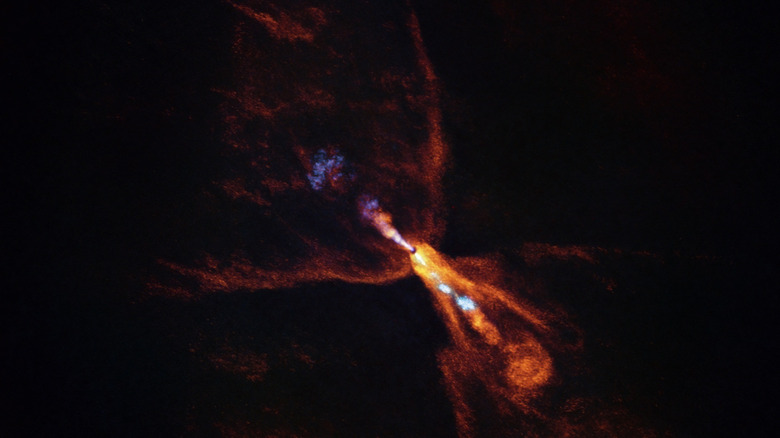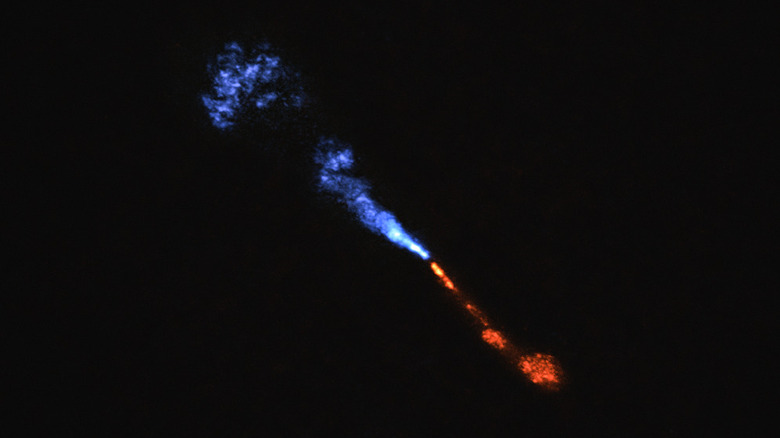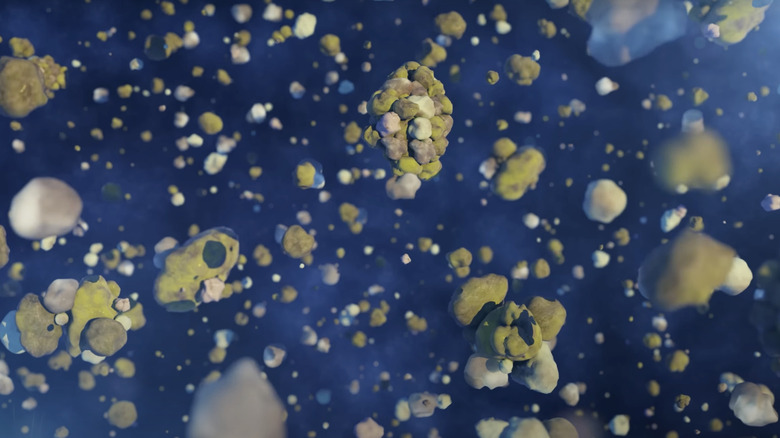How The James Webb Telescope Shows Us What The Dawn Of A New Solar System Looks Like
For the first time in human history, we're watching a new solar system come to life. Not in theory, but in real, observable detail. NASA's James Webb Space Telescope (JWST) and its incredible photographic capabilities, paired with the ALMA radio observatory in Chile, has captured a cosmic baby picture of HOPS-315, a young star cocooned inside a dense cloud about 1,300 light-years away in the Orion constellation. At roughly a hundred thousand years old, a microsecond in cosmological time, this infant star is surrounded by a swirling disk of gas and dust, the exact raw materials needed for the creation of planets.
This process is considered "time zero" in the lifecycle of planetary systems, a phase so brief and hidden by dust that it's never been directly observed until now. JWST identified silicon monoxide (SiO) gas beginning to condense into crystalline silicate minerals, the initial building blocks of rocky planets. ALMA helped pinpoint the origin of this material to a small region in the disk, which is roughly the same distance from the star as the asteroid belt is from our Sun.
According to the European Southern Observatory, a partner in a study about the discovery, "for the first time, we have identified the earliest moment when planet formation is initiated around a star other than our Sun," said Melissa McClure, astronomer and lead author of the study. It's a scientific milestone, and not just a glimpse of how planets form, but a close-up look at the beginning of a solar system much like our own.
How planets are born -- and why HOPS-315 is different
Planet formation doesn't happen in a flash. It begins with chaos; a collapsing cloud of gas and dust, known as protoplanetary discs, forms a spinning disk around a newborn star. Near the center, where temperatures soar, minerals like silicon monoxide exist only as gas. As things cool down, these gases begin to condense into solid crystals, forming tiny silicate grains that eventually clump together to create asteroids, rocky planets, and gas giants like Jupiter with its mushball-covered atmosphere.
What makes HOPS-315 so important is the timing. Most systems we've studied before are already well into the planet-building process where the disks have already settled, and large bodies are forming. But HOPS-315 is still in the early stages of its development. Using the JWST, scientists detected clear signals of hot SiO gas condensing into minerals. They turned to the powerful spatial resolution capabilities of ALMA to pinpoint exactly where it was coming from, observing jets of carbon monoxide and silicon monoxide streaming from the protoplanetary disc, a telltale sign that the young star is still actively feeding on its surrounding material.
According to the European Southern Observatory's press release about its study, "we're really seeing these minerals at the same location in this extrasolar system as where we see them in asteroids in the Solar System," said the study's co-author, Logan Francis, a postdoctoral researcher at Leiden University. It's not just that planets can form here; it's that this is exactly how our planet Earth likely began.
Why watching this moment is a cosmic milestone
Before this discovery, scientists had only observed later stages of planet formation: disks with visible gaps, young planets carving out space, or debris fields forming rings. HOPS-315 offers something entirely different — a view of a solar system at its earliest moment, before planets have even begun to take shape. It confirms that planet-forming materials emerge much earlier than previously thought. Unfortunately, it can't be seen even with the best DIY stargazing gadgets, but the photos captured by ALMA bring you tantalizingly close.
This evidence helps bridge the gap between astrophysical theory and the physical records we find in ancient meteorites. Those space rocks, found on Earth, contain the same types of crystalline silicates now seen forming around HOPS-315. That makes this system a real-world template, a cosmic mirror reflecting our own origin story, but billions of years earlier and light-years away.
According to the European Southern Observatory, co-author of the study Merel van 't Hoff described the phenomenon as "a picture of the baby Solar System," adding that it closely resembles what our own solar system looked like when it was just beginning to form. With discoveries like this, astronomers are finally connecting the dots between cosmic theory and planetary birth, using HOPS-315 as a living case study in how planets like Earth may have first emerged.


